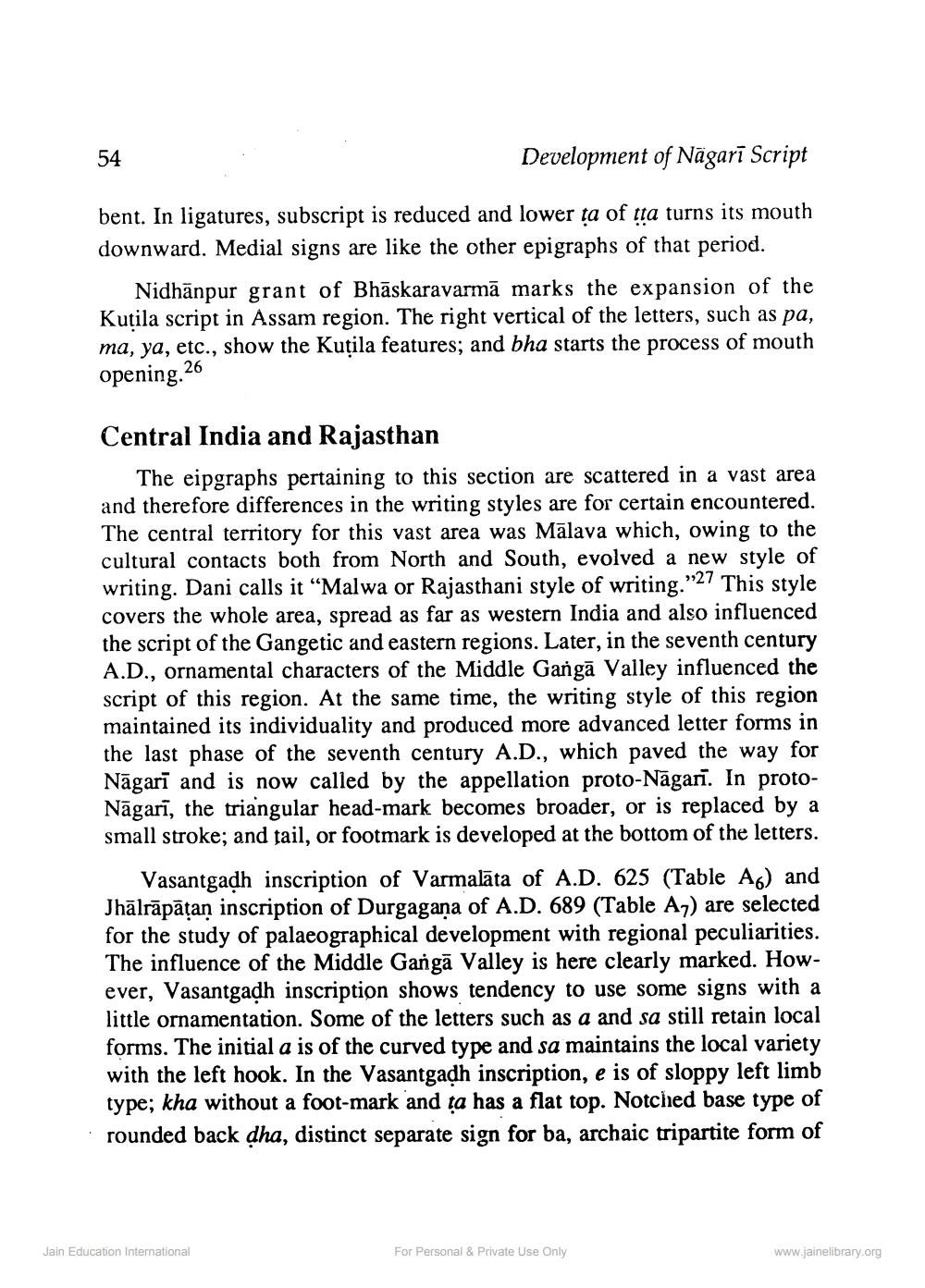________________
54
Development of Nägarī Script
bent. In ligatures, subscript is reduced and lower ta of tta turns its mouth downward. Medial signs are like the other epigraphs of that period.
Nidhānpur grant of Bhāskaravarmā marks the expansion of the Kutila script in Assam region. The right vertical of the letters, such as pa, ma, ya, etc., show the Kuțila features; and bha starts the process of mouth opening 26
Central India and Rajasthan
The eipgraphs pertaining to this section are scattered in a vast area and therefore differences in the writing styles are for certain encountered. The central territory for this vast area was Mālava which, owing to the cultural contacts both from North and South, evolved a new style of writing. Dani calls it “Malwa or Rajasthani style of writing.”2' This style covers the whole area, spread as far as western India and also influenced the script of the Gangetic and eastern regions. Later, in the seventh century A.D., ornamental characters of the Middle Gangā Valley influenced the script of this region. At the same time, the writing style of this region maintained its individuality and produced more advanced letter forms in the last phase of the seventh century A.D., which paved the way for Nāgarī and is now called by the appellation proto-Nāgarī. In protoNāgarī, the triangular head-mark becomes broader, or is replaced by a small stroke; and tail, or footmark is developed at the bottom of the letters.
Vasantgadh inscription of Varmalāta of A.D. 625 (Table Ag) and Jhālrāpāțan inscription of Durgagana of A.D. 689 (Table Ay) are selected for the study of palaeographical development with regional peculiarities. The influence of the Middle Gangā Valley is here clearly marked. However, Vasantgadh inscription shows tendency to use some signs with a little ornamentation. Some of the letters such as a and sa still retain local forms. The initial a is of the curved type and sa maintains the local variety with the left hook. In the Vasantgadh inscription, e is of sloppy left limb type; kha without a foot-mark and ta has a flat top. Notched base type of rounded back dha, distinct separate sign for ba, archaic tripartite form of
Jain Education International
For Personal & Private Use Only
www.jainelibrary.org




